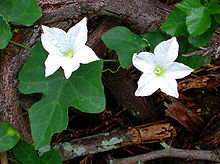 |
|
|---|---|
 |
|
AZATHIOPRINE
generic licensing news
http://newsletter.lead-doctors.com/ef1/preview_campaign.php?lf1=932543337a665012625317e9856877
Azathioprine is a chemotherapy drug, now rarely used for chemotherapy but more for immunosuppression in organ transplantation and autoimmune disease such as rheumatoid arthritis or inflammatory bowel disease or Crohn’s disease. It is a pro-drug, converted in the body to the active metabolite 6-mercaptopurine. Azathioprine acts to inhibit purine synthesis necessary for the proliferation of cells, especially leukocytes and lymphocytes. It is a safe and effective drug used alone in certain autoimmune diseases, or in combination with other immunosuppressants in organ transplantation.
Click here to contact Douglas Pharmaceuticals about this product.

Azathioprine was synthesized by George Herbert Hitchings and Gertrude Elion in 1957 (named BW 57-322) to produce 6-mercaptopurine (6-MP) in a metabolically active but masked form, and at first used as a chemotherapy drug.
Robert Schwartz investigated the effect of 6-MP on the immune response in 1958 and discovered that it profoundly suppresses the formation of antibodies when given to rabbits together with antigens. Following the work done by Sir Peter Medawar and Gertrude Elion in discovering the immunological basis of rejection of transplanted tissues and organs, and Schwartz’s researches on 6-MP, Sir Roy Calne, the British pioneer in transplantation, introduced 6-MP as an experimental immunosuppressant for kidney and heart transplants. When Calne asked Elion for related compounds to investigate, she suggested azathioprine, which was subsequently found out to be superior (as effective and less toxic to the bone marrow) by Calne. On 5 April 1962, with regimens consisting of azathioprine and prednisone, the transplantation of kidneys to unrelated recipients (allotransplantation) was successful for the first time.For many years, this kind of dual therapy with azathioprine and glucocorticoids was the standard antirejection regimen, until ciclosporin was introduced into clinical practice (by Calne as well) in 1978.Ciclosporin has now replaced some of the azathioprine use due to a longer survival time, especially in heart-related transplantations.Moreover, despite being considerably more expensive, mycophenolate mofetil is also increasingly being used in place of azathioprine in organ transplantation, as it is associated with less bone marrow suppression, fewer opportunistic infections, and a lower incidence of acute rejection
Azathioprine is a thiopurine linked to a second heterocycle (an imidazole derivative) via a thioether. It is a pale yellow solid with a slightly bitter taste and a melting point of 238–245 °C. It is practically insoluble in water and only slightly soluble in lipophilic solvents such as chloroform, ethanol and diethylether. It dissolves in alkaline aqueous solutions, where it hydrolyzes to 6-mercaptopurine.
Azathioprine is synthesized from 5-chloro-1-methyl-4-nitro-1H-imidazole and 6-mercaptopurine in dimethyl sulfoxide (DMSO). The synthesis of the former starts with an amide from methylamine and diethyl oxalate, which is then cyclizised and chlorinated with phosphorus pentachloride; the nitro group is introduced with nitric and sulfuric acid.

Azathioprine (INN, /ˌæzəˈθaɪɵpriːn/, abbreviated AZA) is an immunosuppressive drug used in organ transplantation and autoimmune diseases and belongs to the chemical class of purine analogues.[1] Synthesized originally as a cancer drug and a prodrug for mercaptopurine in 1957, it has been widely used as an immunosuppressant for more than 50 years.[2]
Azathioprine acts as a prodrug for mercaptopurine, inhibiting an enzyme that is required for the synthesis of DNA. Thus it most strongly affects proliferating cells, such as the T cells and B cells of the immune system.[3][4]
The main adverse effect of azathioprine is bone marrow suppression, which can be life-threatening, especially in people with a genetic deficiency of the enzyme thiopurine S-methyltransferase.[5] It is also listed by the International Agency for Research on Cancer as a Group 1 carcinogen (carcinogenic to humans).[6]
Azathioprine is produced by a number of manufacturers under different brand names (Azasan by Salix in the U.S., Imuran by GlaxoSmithKline in Canada, the U.S., Australia, Ireland and Great Britain, Azamun in Finland and Imurel in Scandinavia and France, among others).
Azathioprine is used alone or in combination with other immunosuppressive therapy to prevent rejection following organ transplantation, and to treat an array of autoimmune diseases, including rheumatoid arthritis, pemphigus, systemic lupus erythematosus, Behçet’s disease and other forms of vasculitis, autoimmune hepatitis, atopic dermatitis, myasthenia gravis, neuromyelitis optica (Devic’s disease), restrictive lung disease, and others. It is also an important therapy and steroid-sparing agent for inflammatory bowel disease (such as Crohn’s disease and ulcerative colitis) and for multiple sclerosis, which are immune-mediated as well.
In the United States it is currently approved by the Food and Drug Administration (FDA) for use in kidney transplantation from human donors, and for rheumatoid arthritis. Other uses are off-label.
- Azathioprine – FDA approved drug information (drug label) from DailyMed (U.S. National Library of Medicine).
- Azathioprine – Drug information for consumers from MedlinePlus (U.S. National Library of Medicine).
- Azathioprine – Detailed information from DrugBank.
























 6-Shogaol is isolated from the dried or cooked rhizomes or roots of the plant Zingiber officinale (ginger). It is a perennial reed-like plant with annual leafy stems, about a meter (3 to 4 feet) tall. 6-Shogaol is a dehydrated 6-gingerol molecule that has lost a molecule of water during the drying or cooking process.
6-Shogaol is isolated from the dried or cooked rhizomes or roots of the plant Zingiber officinale (ginger). It is a perennial reed-like plant with annual leafy stems, about a meter (3 to 4 feet) tall. 6-Shogaol is a dehydrated 6-gingerol molecule that has lost a molecule of water during the drying or cooking process.



